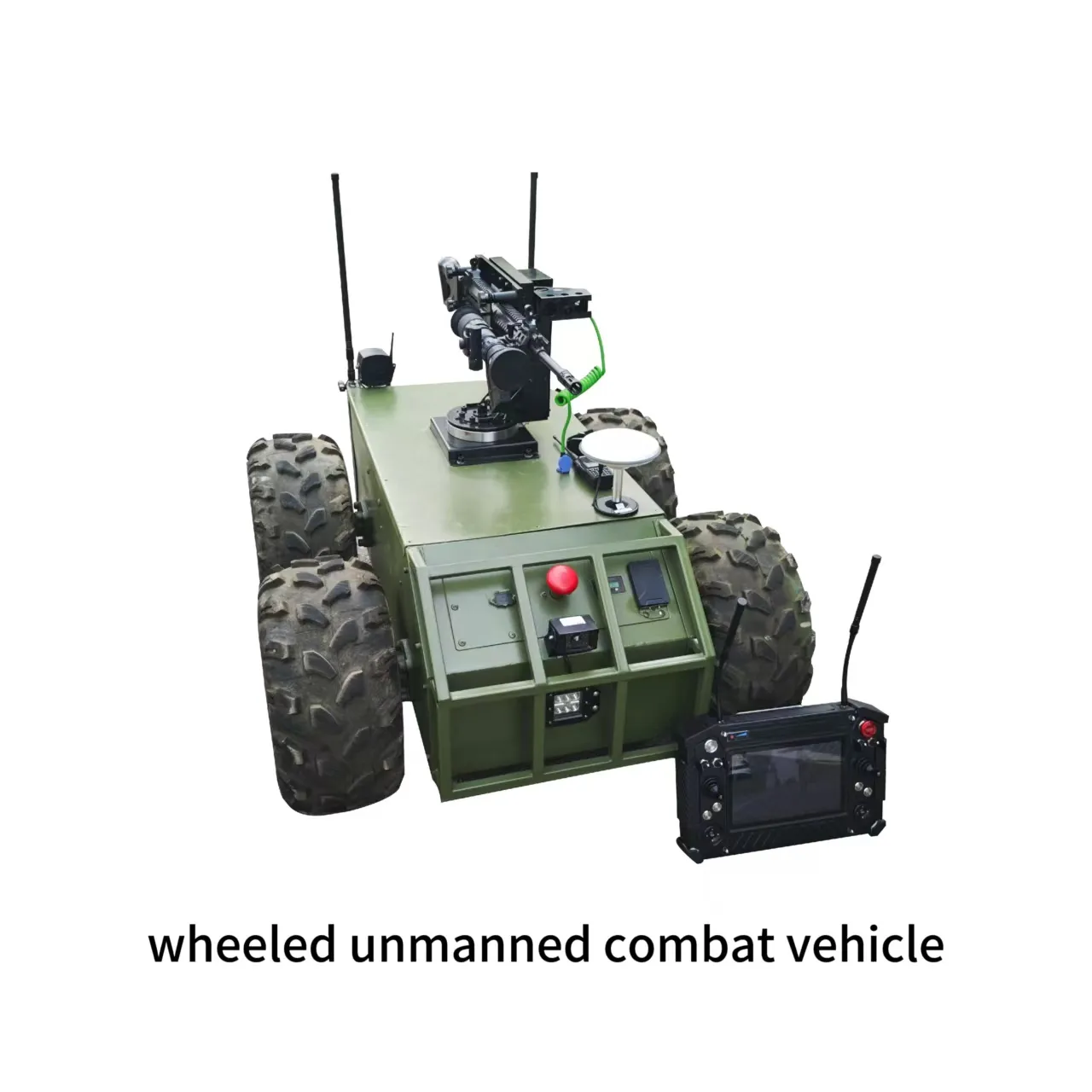In difficili et incognoscibili ambiente zona pugnae , vehicula militaria praestantiam et fidem eximiam requirunt. Pneumatici militares runflat notabile progressum in mobilitate proelii repraesentant, praestantiae incomparabilis nivea salutis et continuitatis operis. Hi specializati pneumatici militibus vehiculis permittunt mobilitatem retinere etiam postquam multiplices rupturas vel damna explosiva passi sunt, denique vitas servantes et missionem feliciter absolvi.
Evolutio pneumaticorum militarium runflat modum quo copiae armatae mobilitatem tacticam adpetunt convertit. Hi docti apparatus pneumatici parietes laterales refortes et novas anulos sustentationis includunt qui vehiculis permittunt etiam celeritate minore operari etiam cum tota pressio pneumatici amissa est. Haec facultas satis necessaria evasit quia modernae conditionis belli maior supervivencia vehiculorum et diuturnitas missionis postulantur.
Tympana militaria runflat rationem ingeniariam complexam continent, quae ea a tympanis vulgaribus distinguunt. Prima component est paries lateralis renforzatus qui integritatem structuralem servat etiam sub onere extremo. Hi parietes specialiter ad vehiculi pondus ferendum designati sunt cum pressione aeris amissa, ne tympanum collabatur et spatium inter terram et vehiculum salvetur.
Structura interna supportiva speciales compositiones rubberas et materiales renforzatos includit qui durabilitatem praestant. Hi materiales diligenter eliguntur ut non solum pondus vehiculorum militarium sed etiam conditiones extremas in zonis proeliis, ab aestu desertorum ad frigida montium climata, sustineant.
In medio militari runflat pneumaticorum positum est novum systema anuli supportis. Ex materia fortis facti sunt anuli qui formam suam et capacitatem ferendi oneris conservant etiam sub condicionibus extremis. Anuli supportis designatio operationem continuandam permittit ad velocitates praescriptas, quae saepe inter 30 et 50 millia pro hora sunt, etiam post completam pressionis amissionem.
Integratio horum anulorum supportis requiret exactas fabricationis tolerantias ad idoneam adaptationem et praestationem certificandam. Ratione modelorum computatrum subtilium et experimentorum procedurarum designatio validatur ad strictas militares specificiones de durabilitate et fiducia complendas.

Tympana militaria runflat augeant superbiavit vehiculi in situ bellicis. Cum tympanis conventionalis laedi sunt ab igne hostis aut instrumentis explosivis improvisatis, vehicula immobilis et obnoxia fiunt. At vero vehicula militaria cum tympanis runflat instructa operari possunt, ut milites pergere possint per zonas periculi et mandata necessaria perficere etiam si tympana laedantur.
Haec aucta superbiavit ultra immediate situ bellicis. Facultas mobilitatis retinendae post damnum tympanorum indigentiam minuit ut mutatio tympanorum periculosi in regionibus hostilibus, custodians tueatur et expositionem ad pericula hostium minuit.
Mantentia momentum operis est crucialis in operationibus militum. Milia rotarum militum runflat efficiunt ut vehicula possint mandata sua continuare etiam postquam plures ictus rotae sustinuerint. Haec facultas valde utilis est durante patrullis longi-rangis, missionibus explorandi, et celeri promotionis ubi immobilizatio vehiculi mandata compromittere potest.
Mobilitas ex his rotis praebita etiam onus logisticon in militibus minuit. Pauciores opuscula emendationis et recuperandi necessaria sunt, ut res magis efficaciter in campo pugnae distribui possint.
Tympana militaria runflat ita sunt parata ut in omnibus locorum generibus valeant. Formae speciales striarum et compositiones substantiae praebent praestantem tractionem in arenis desertorum, in saxosis montanis semitis, in paludosis locis et in urbicis regionibus. Haec versatilitas ad modernas operationes militares necessaria est, quae per multas locorum formas in una missione transcurrere possunt.
Designatio tympanorum etiam praedita est particularibus quae caloris incrementum prohibent durante operatione longa in difficultatis locis. Canales ad refrigerandum et materiae resistentes calori constantem operationem servant etiam sub extremis conditionibus ambientalibus.
Tympana militaria moderna runflat suas proprietates operationales in latissimo caloris intervallo servant. Compositiones caoutchouc diligentissime selectae manent flexibilis in conditionibus subgelidis tum etiam integritatem structuralem in extremo calore servant. Haec caloris constantia operationem credibilem ubique in orbe terrarum firmat.
Praeterea, hi pneumatici praebent tractationes et tecturas speciales quae resistunt degradationi ambientali expositonibus UV, agentibus chemicis, et aliis conditionibus asperis quae saepe in operationibus militarium reperiuntur.
Generatio proxima pneumaticorum militarium runflat incorporat sensorem progressum et systemata custodiarum. Haec praefecta sapientia dat informationem in tempore reali de condicione pneumatici, pressione, temperatura, et integritate structurae. Haec informatio permittit praesidiis custodiae et monitis praeacutis de defectibus potencialibus, fidem operationalem augendo.
Technologiae emergentes includunt materiales sanatores qui damnum minorem automo reparare possunt, et figuras sulcorum adaptivorum quae configurationem suam secundum conditiones loci mutare possunt. Haec inventa pollicentur ulterius capacitatem pneumaticorum militarium runflat augere.
Fabricantes militares de pneumatici magis magisque in methodis sustinendis productionis insistentes, sine compromissu functionis. Nova artificia fabricandi energiam minuunt consumptionem et sordes, dum altissima aeternitate et fidelia custodiuntur. Programma progressa recyclandi adhibentur ad tractandas veteres pneumaticos militares runflat, periculum ambientale minuendo.
Investigatio de materialibus amicis ambientis progreditur, quae aequent vel superent praesentia specifica functionis, dum pedis vestigium ambientale productionis et depositionis pneumaticorum minuitur.
Vehicula militaria typice operari possunt in pneumaticis deflatiis runflat pro 50-100 chiliometris velocitate minuta, secundum specifice pneumati modelum et vehiculi pondus. Tamen, restitutio celeriter petenda est, ut damnum perpetuum pneumatico praeveniatur, ubi tactice fieri potest.
Plurimi milites runflat pneumatici sunt pro conservando celeritate inter 30-50 millia passuum per horam cum deflati sunt. Exacta celeritatis facultas pendet a factoribus ut vehiculi pondus, conditio terreni, et specifice runflat systemate adhibitum.
Quamquam levis damnum ad milites runflat pneumaticos saepe reparari potest per usum technicarum specialium, gravissimum damnum aut prolixum currere in deflata condicione mutorum substitutionem requiret. Singulae casus a technicis qualificatis iuxta militem maintenance protocola aestimandae sunt.
 Nuntii Calidi
Nuntii Calidi